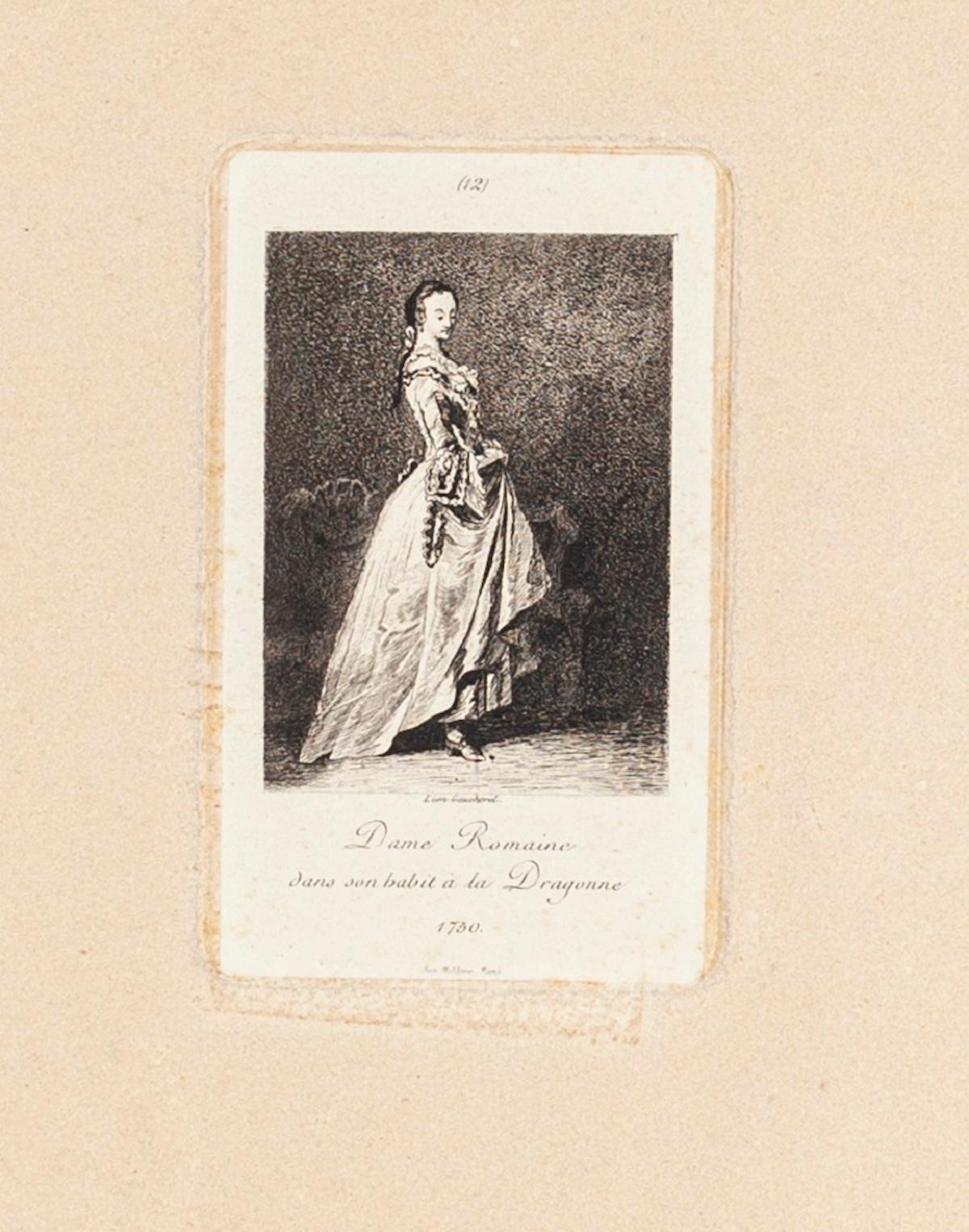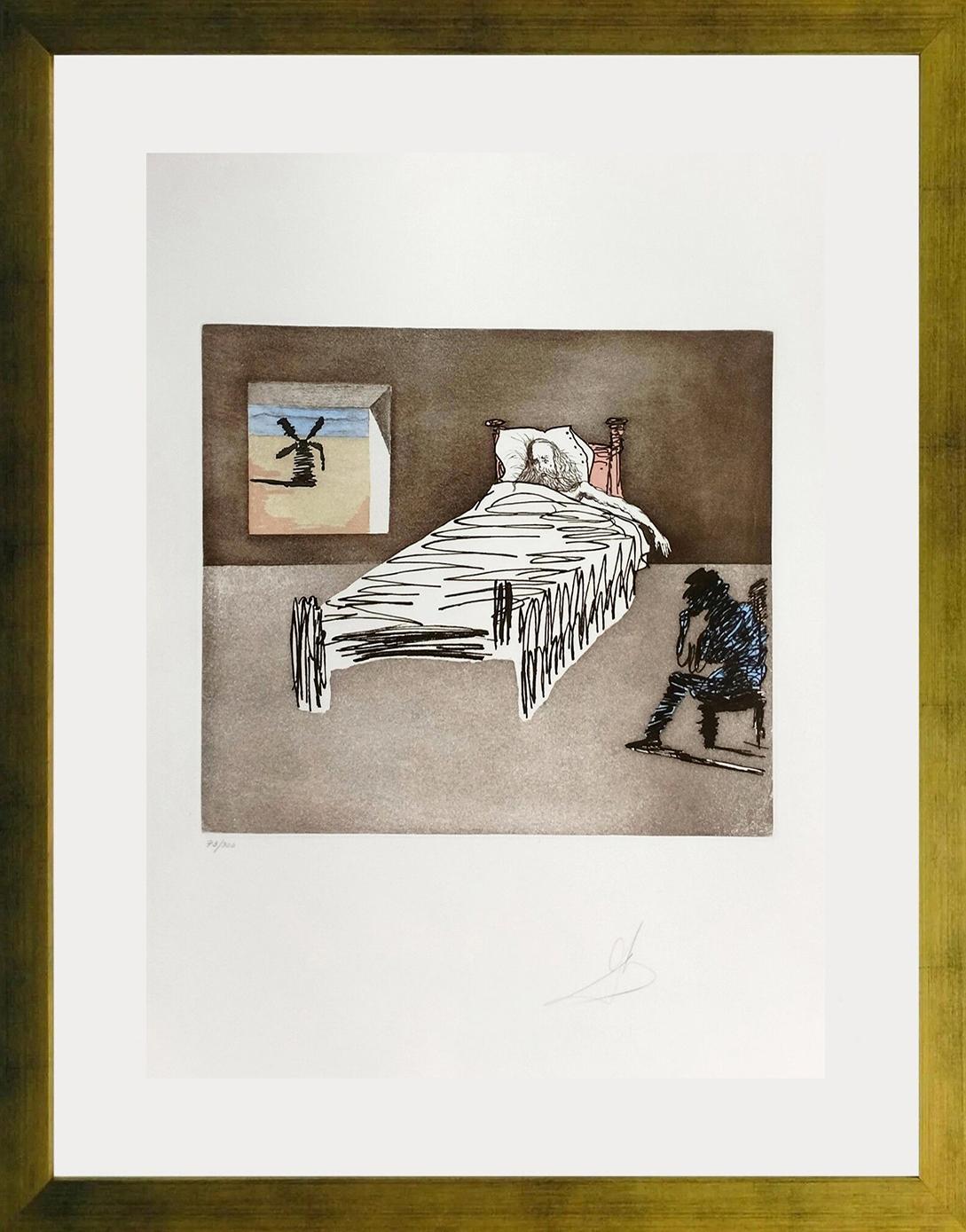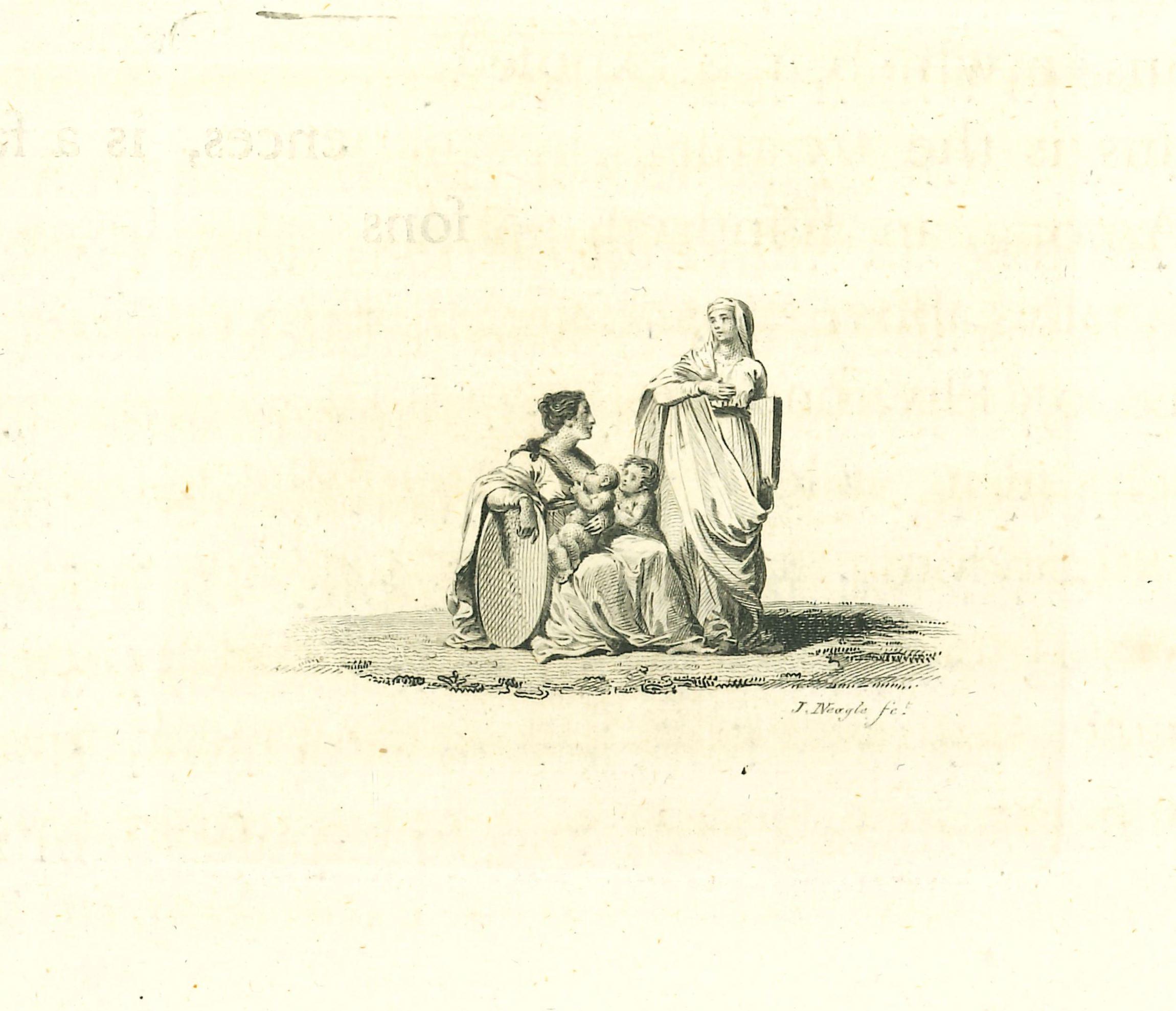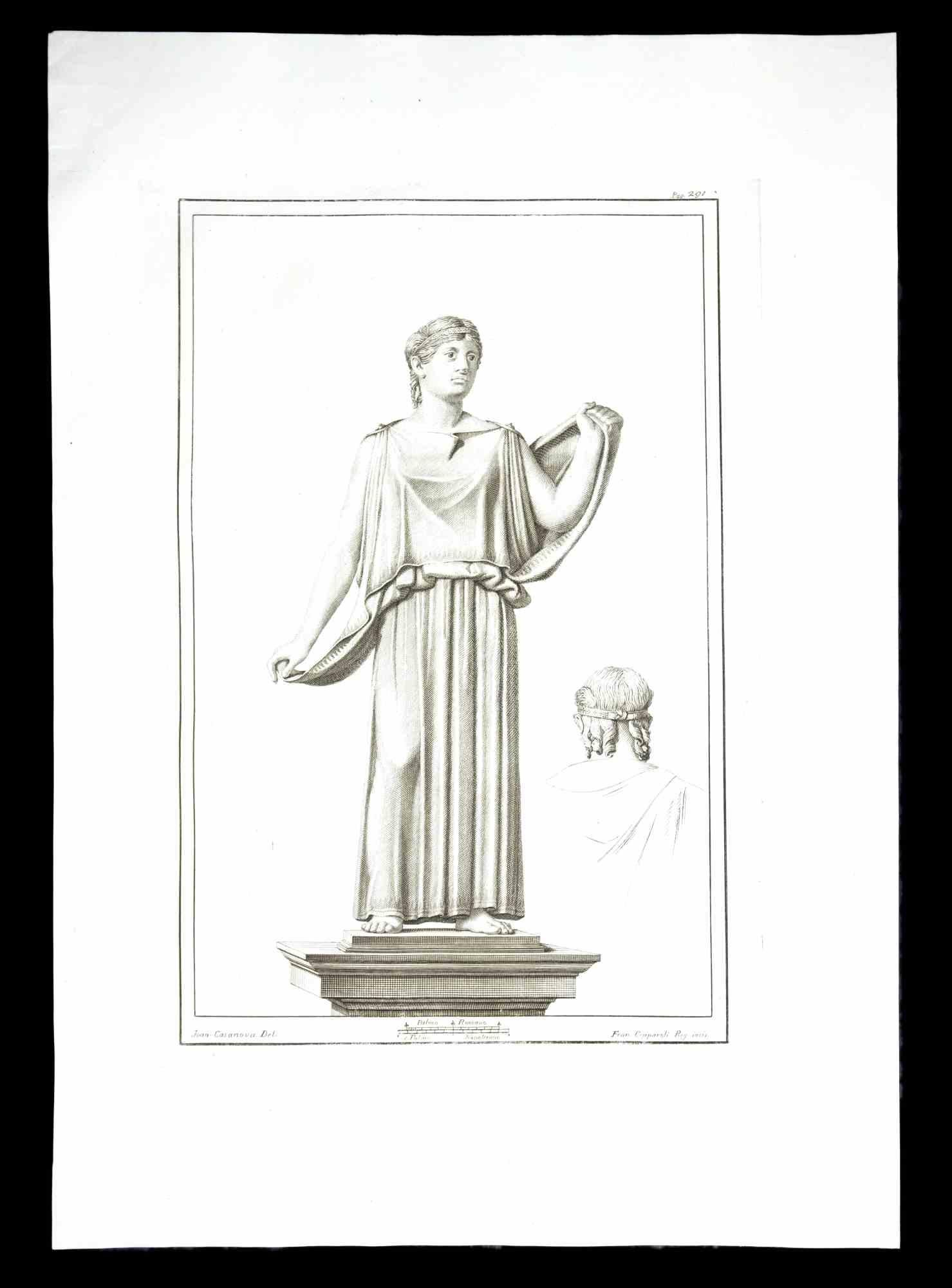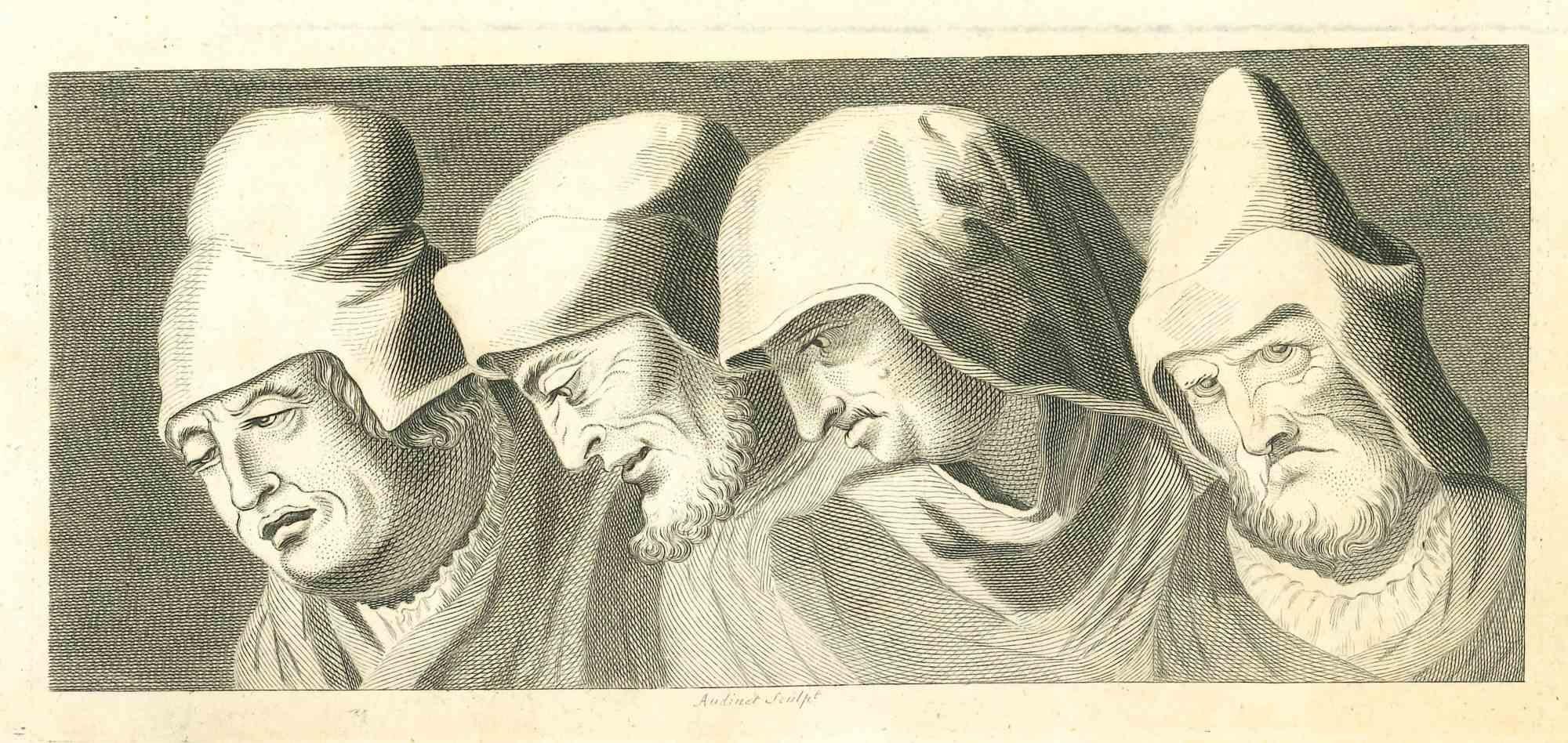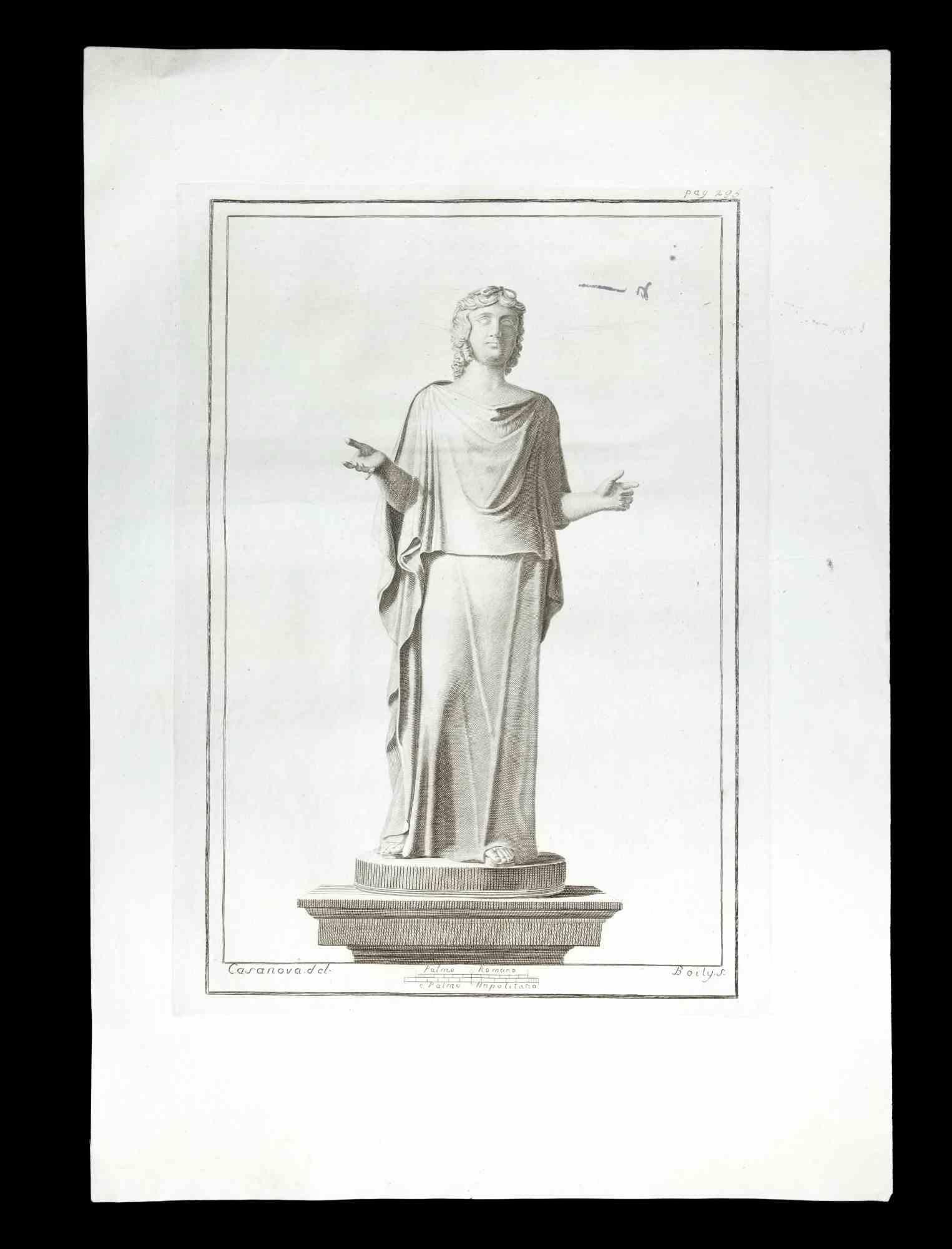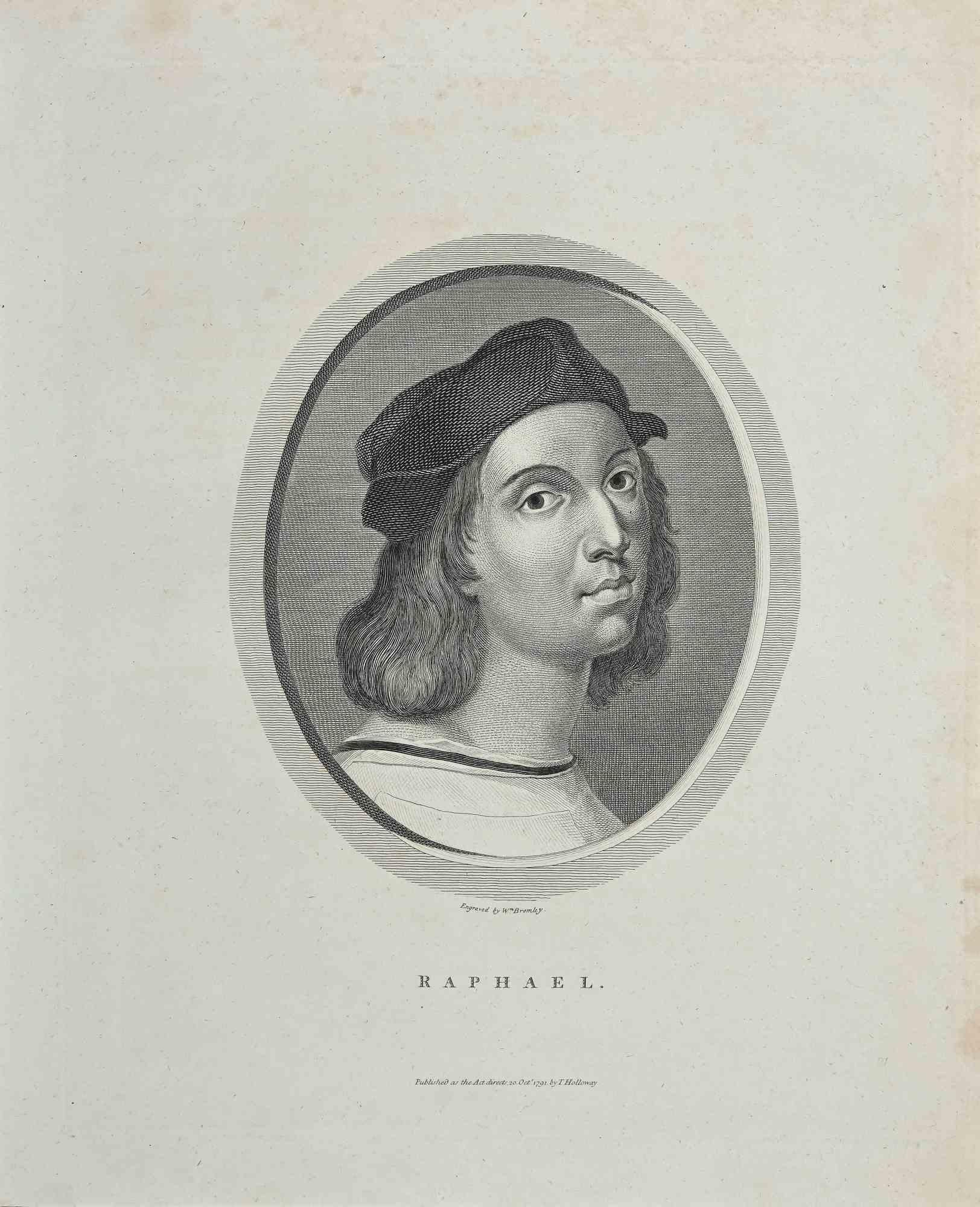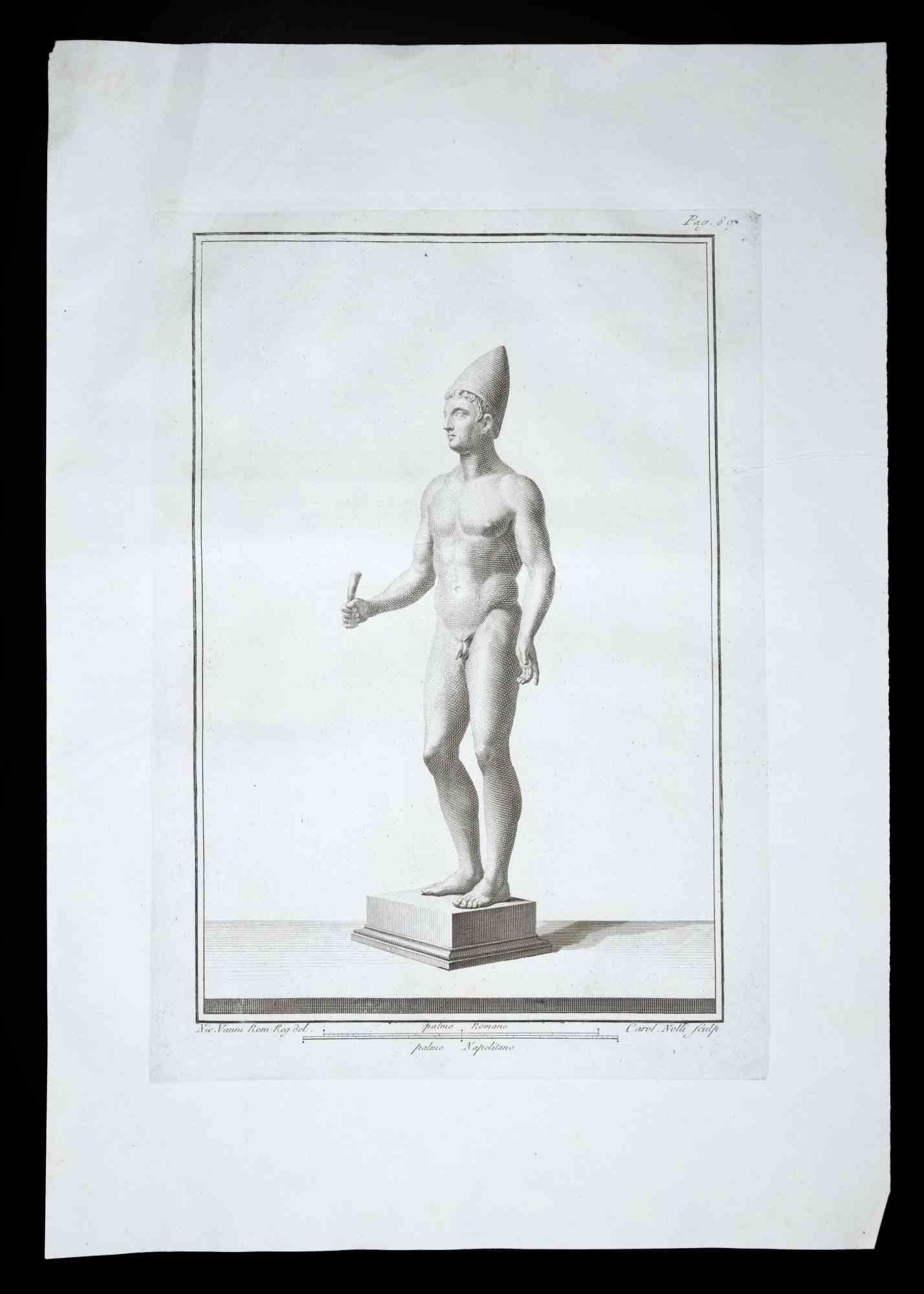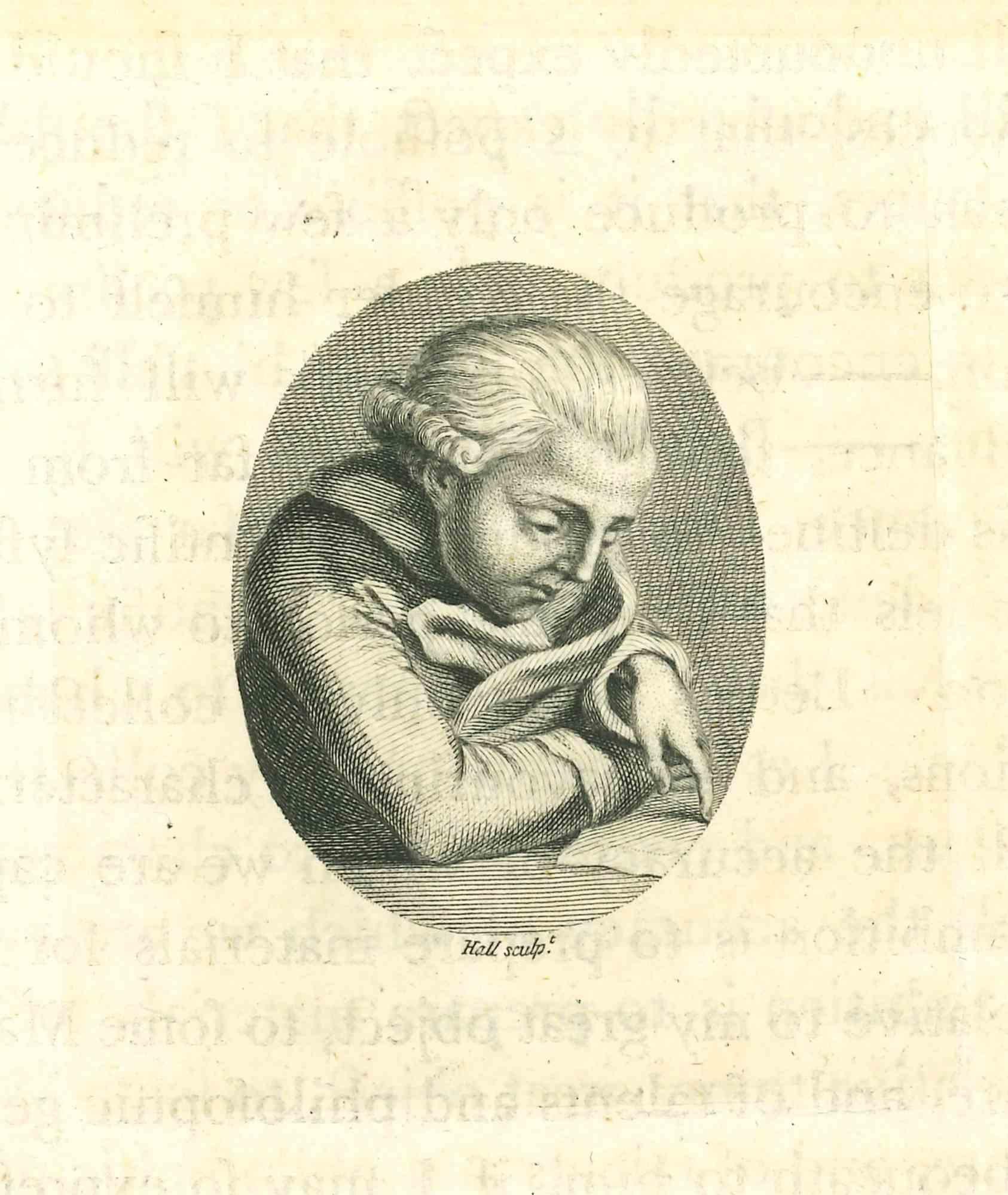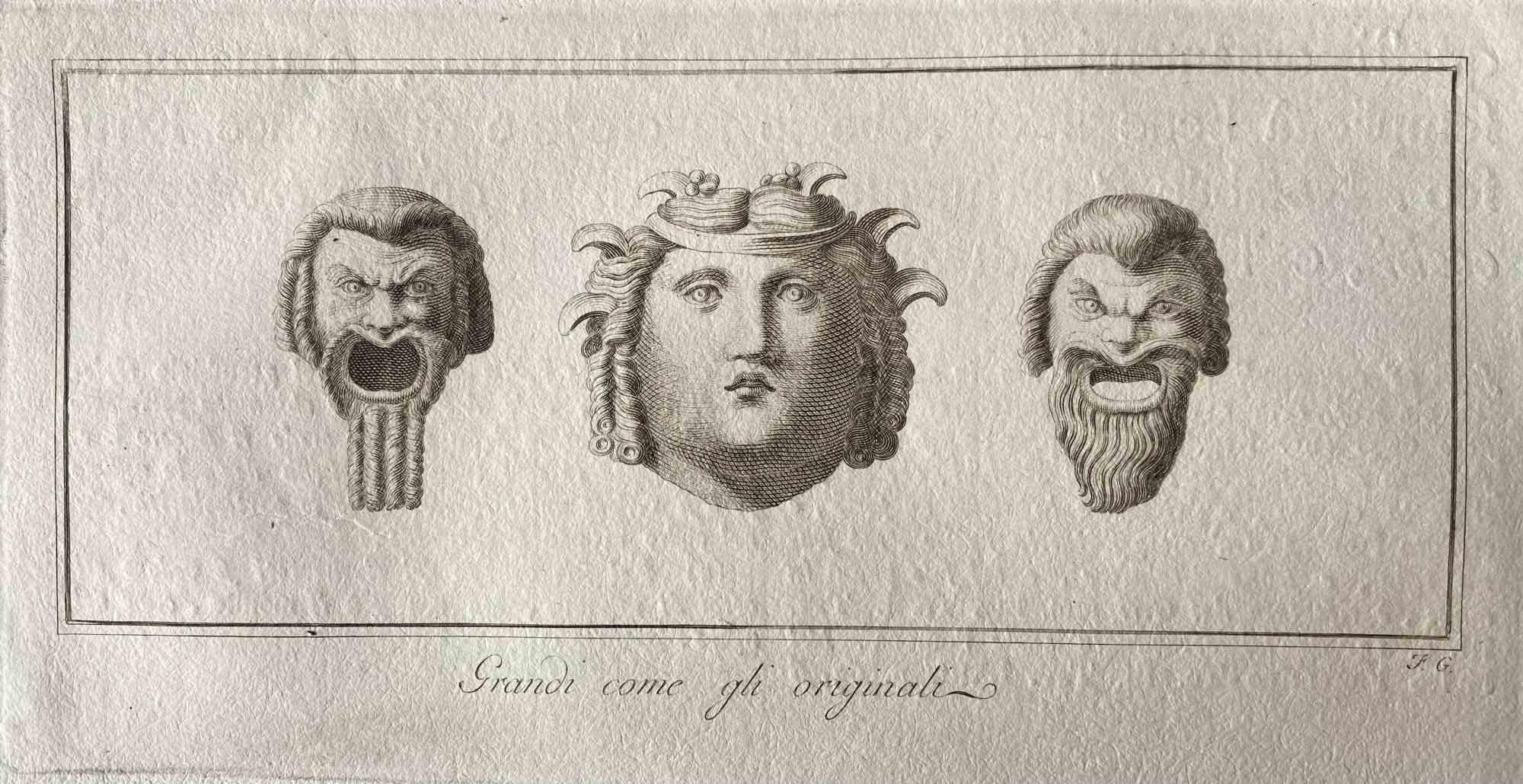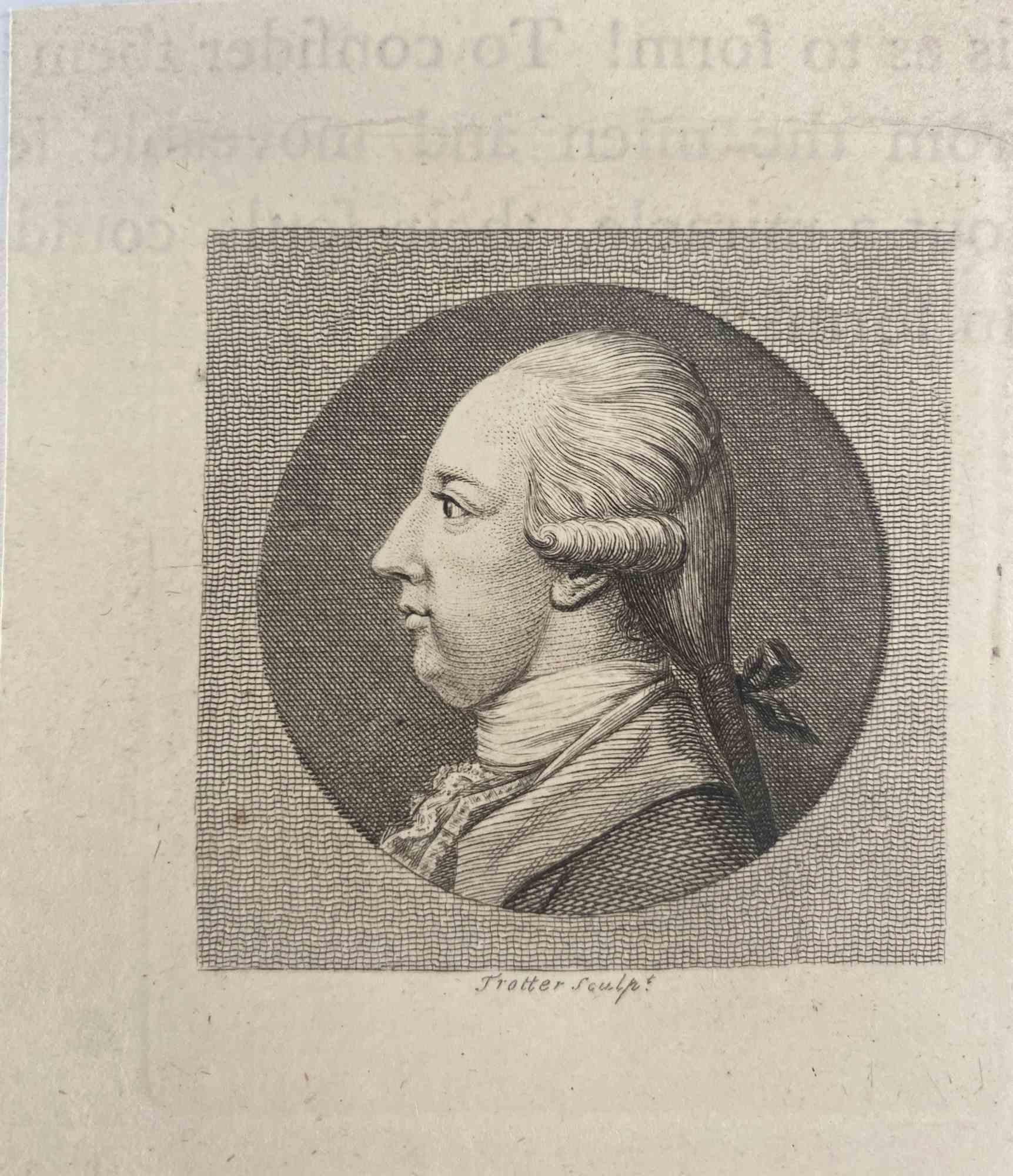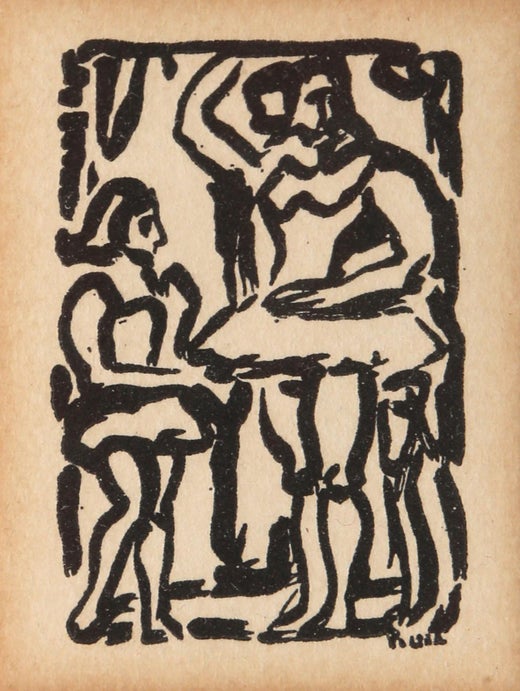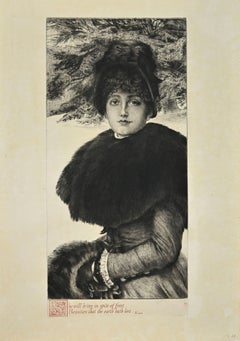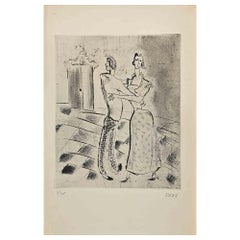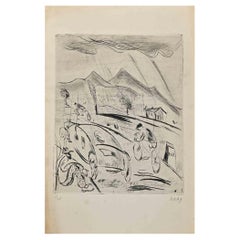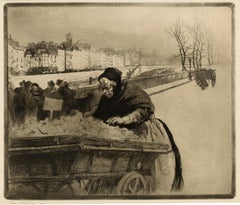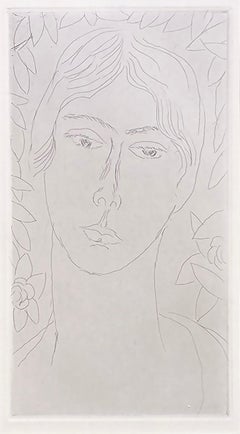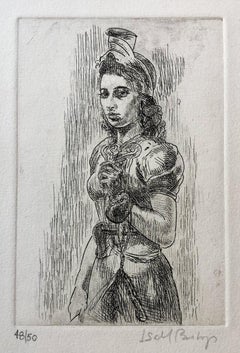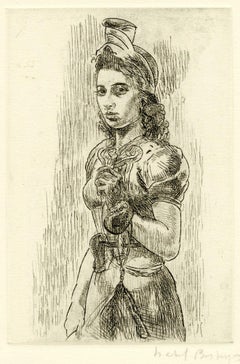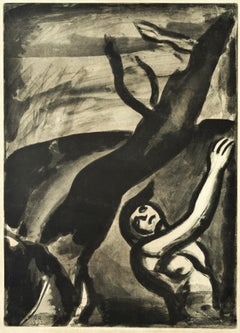
Demain Sera Beau Disait le Naufragé - Original Etching by G. Rouault - 1948
View Similar Items
Want more images or videos?
Request additional images or videos from the seller
1 of 7
Auction endedBrowse Current Auctions
Georges RouaultDemain Sera Beau Disait le Naufragé - Original Etching by G. Rouault - 19481948 (1922)
1948 (1922)
Price:$524.50
$2,940.02List Price
About the Item
- Creator:Georges Rouault (1871-1958, French)
- Creation Year:1948 (1922)
- Dimensions:Height: 25.2 in (64 cm)Width: 18.9 in (48 cm)Depth: 0.04 in (1 mm)
- Medium:
- Movement & Style:
- Period:
- Framing:Framing Options Available
- Condition:Insurance may be requested by customers as additional service, contact us for more information.
- Gallery Location:Roma, IT
- Reference Number:Seller: M-1078511stDibs: LU65036556892
Georges Rouault
Executed in 1937, Carlotta belongs to a group of portraits of members of society. Unlike Picasso and Toulouse-Lautrec, who portrayed these individuals with pathos, Rouault’s approach was unapologetic and raw. In the present work several layers of pigment can be discerned; the build-up of translucent and opaque layers of paint creates a three-dimensionality that characterizes the artist’s strongest work. Furthermore, the work is highlighted by the deep swaths of black delineating the subject, representing a signature element of Rouault’s portraiture of this period.
About the Seller
4.9
Platinum Seller
Premium sellers with a 4.7+ rating and 24-hour response times
1stDibs seller since 2017
7,553 sales on 1stDibs
Typical response time: 2 hours
Authenticity Guarantee
In the unlikely event there’s an issue with an item’s authenticity, contact us within 1 year for a full refund. DetailsMoney-Back Guarantee
If your item is not as described, is damaged in transit, or does not arrive, contact us within 7 days for a full refund. Details24-Hour Cancellation
You have a 24-hour grace period in which to reconsider your purchase, with no questions asked.Vetted Professional Sellers
Our world-class sellers must adhere to strict standards for service and quality, maintaining the integrity of our listings.Price-Match Guarantee
If you find that a seller listed the same item for a lower price elsewhere, we’ll match it.Trusted Global Delivery
Our best-in-class carrier network provides specialized shipping options worldwide, including custom delivery.More From This Seller
View AllPromenade dans la Neige - Etching by J. Tissot - 1880
By James Tissot
Located in Roma, IT
Beautiful print on verge crème, 2° state on 3, with letters printed in red. Stamp “Lugt 1545”.
Little crack and fold on lower left margin of the sheet.
Some small traces of oxidati...
Category
1880s Post-Impressionist Portrait Prints
Materials
Drypoint, Etching
Trajan - Drypoint Etching attr. to Salvador Dalì - 1973
By Salvador Dalí
Located in Roma, IT
Trajan is an original contemporary artwork realized in 1973.
Black and white drypoin etching.
Hand signed on the lower margin.
Numbered on the lower left. Edition of 216/261.
Ref...
Category
1970s Surrealist Figurative Prints
Materials
Etching, Drypoint
$1,481 Sale Price
25% Off
Dancers - Original Etching and Drypoint by Robert Naly - Mid 20th Century
By Robert Naly
Located in Roma, IT
Dancers is an Original Etching and Drypoint realized by Robert Naly (1900-1984)
Good condition on a yellowed paper.
Edition of 3/25.
Hand-signed and numbered on the lower margin.
Category
Mid-20th Century Modern Figurative Prints
Materials
Drypoint, Etching
The Race - Original Etching by Robert Naly - Mid 20th Century
By Robert Naly
Located in Roma, IT
The Race is an Original Etching and Drypoint realized by Robert Naly (1900-1984).
Good condition on a yellowed paper .
Hand-signed by the artist on the lower right corner.
Category
Mid-20th Century Modern Figurative Prints
Materials
Drypoint, Etching
Dans la Poudrière - Etching and Drypoint by Anselmo Bucci - 1917
By Anselmo Bucci
Located in Roma, IT
Dans la Poudrière - from "Le Croquis du Front Italien" is an Etching and Drypoint realized by the Italian Artist Anselmo Bucci, in 1917.
Hand signed on the right margin . Edition n. 68/100 specimens on Hollande paper. From the collection: “Croquis du Front Italien” , published in Paris by D'Alignan editions.
Good conditions, except for a light yellowing of the paper.
Anselmo Bucci (1887-1955) was an Italian painter and printmaker.
He took part in the Salon des Indépendants from 1910 on. He enlisted in the Volunteer Cyclist Battalion in 1915 and he became one of the most famous Italian war...
Category
1910s Modern Figurative Prints
Materials
Etching, Drypoint
$245 Sale Price
25% Off
Model - Etching by G. De Nittis - 1870s
By Giuseppe De Nittis
Located in Roma, IT
Charming original drypoint on ivorycoloured plate realized by Giuseppe De Nittis between 1870 and 1880. Signed on plate lower left margin, not numbered and in perfect conditions. Inc...
Category
1870s Modern Figurative Prints
Materials
Drypoint, Etching
$2,293 Sale Price
25% Off
You May Also Like
La Marchande des Quatres-Saisons
By Edgar Chahine
Located in Middletown, NY
Etching with drypoint on cream wove paper, 11 3/4 x 13 3/4 inches (297 x 347 mm), full margins. Signed in pencil and numbered 32/40, lower margin. Minor mat tone and several small lo...
Category
Early 20th Century Post-Impressionist Portrait Prints
Materials
Handmade Paper, Rag Paper, Drypoint, Etching
"Mlle Landsberg" (grade planche, pl. 16)
By Henri Matisse
Located in Missouri, MO
"Mlle Landsberg" (grade planche, pl. 16), 1914
Henri Matisse (French, 1869-1954)
Signed and Numbered Lower Right
Edition 12/15
Image size: 7 7/8 x 4 5/16 inches
Sheet size: 17 11/16 x 12 1/2 inches
With frame: 19 1/2 x 14 1/2 inches
Henri Matisse came from a family who were of Flemish origin and lived near the Belgian border. At eight o'clock on the evening of December 31, 1869, he was born in his grandparents' home in the town of Le Cateau in the cheerless far north of France. His father was a self-made seed merchant who was a mixture of determination and tightly coiled tension.
Henri had no clear idea of what he wanted to do with his life. He was a twenty-year-old law clerk convalescing from appendicitis when he first began to paint, using a box of colors given to him by his mother. Little more than a year later, in 1890, he had abandoned law and was studying art in Paris. The classes consisted of drawing from plaster casts and nude models and of copying paintings in the Louvre. He soon rebelled against the school's conservative atmosphere; he replaced the dark tones of his earliest works with brighter colors that reflected his awareness of Impressionism. Matisse was also a violinist; he took an odd pride in the notion that if his painting eye failed, he could support his family by fiddling on the streets of Paris.
Henri found a girlfriend while studying art, and he fathered a daughter, Marguerite, by her in 1894. In 1898 he married another woman, Amelie Parayre. She adopted the beloved Marguerite; they eventually had two sons, Jean, a sculptor and Pierre who became an eminent art dealer. Relations between Matisse and his wife were often strained. He often dallied with other women, and they finally separated in 1939 over a model who had been hired as a companion for Mme. Matisse. She was Madame Lydia, and after Mme. Matisse left, she remained with Matisse until he died.
Matisse spent the summer of 1905 working with Andre Derain in the small Mediterranean seaport of Collioure. They began using bright and dissonant colors. When they and their colleagues exhibited together, they caused a sensation. The critics and the public considered their paintings to be so crude and so roughly crafted that the group became known as Les Fauves (the wild beasts).
By 1907, Matisse moved on from the concerns of Fauvism and turned his attention to studies of the human figure. He had begun to sculpt a few years earlier. In 1910, when he saw an exhibition of Islamic art, he was fascinated with the multiple patterned areas and adapted the decorative universe of the miniatures to his interiors. As a continuation of his interest in the "exotic", Matisse made extended trips to Morocco in 1912 and 1913.
At the end of 1917, Matisse moved to Nice; he would spend part of each year there for the remainder of his life. A meticulous dandy, he wore a light tweed jacket amd a tie when he painted. He never used a palette, but instead squeezed his colors on to plain white kitchen dishes...
Category
1910s Fauvist Figurative Prints
Materials
Drypoint, Etching
Price Upon Request
14th Street Oriental
By Isabel Bishop
Located in Middletown, NY
New York, Associated American Artists, 1950. Drypoint and aquatint on cream wove paper, 5 7/8 x 3 15/16 inches (150 x 100 mm), full margins. Signed and numbered 48/50 in pencil, lower margin. Printed by Stephen Sholinsky...
Category
Mid-20th Century American Modern Portrait Prints
Materials
Drypoint, Aquatint
Fourteenth Street Oriental
By Isabel Bishop
Located in Middletown, NY
New York: Associated American Artists, 1950. Drypoint and aquatint on white wove paper, 5 7/8 x 3 15/16 inches (150 x 100 mm), full margins. Signed in pencil in the lower margin. Pri...
Category
Mid-20th Century American Realist Portrait Prints
Materials
Drypoint, Aquatint
Arnulf Rainer, Self-Portrait - Drypoint Etching and Aquatinta, Signed Print
By Arnulf Rainer
Located in Hamburg, DE
Arnulf Rainer (Austrian, born 1929)
Self-Portrait, 1995
Medium: Drypoint etching and aquatinta on wove paper
Dimensions: 53.5 x 38 cm
Edition of 35: Hand-signed and numbered
Publishe...
Category
20th Century Contemporary Figurative Prints
Materials
Drypoint, Aquatint
"Mes Petites Amies, Les Deux Sœurs" signed by Jacques Villon
By Jacques Villon
Located in Milwaukee, WI
This is a drypoint and aquatint artwork by Jacques Villon. The artist signed in pencil on the lower right. As well as signed in plate at the top right of the image. This is a wonderful artwork of different intaglio processes being brought together in a beautiful almost seamless harmony. The thin pencil like markings and hair detailing are made using the Drypoint printmaking method. Whilst the color details around the girls are made using the Aquatint etching method. Jacques Villon shows his skills as a printmaker with the way these pieces line up perfectly and with how clean the rest of the plate is around the girls. An unnumbered impression, apart from the numbered edition of 50.
Catalogue Raisonne E101, pg. 66-67 (Ginestet & Pouillon. It depicts two young girls.
15" x 11 1/2" art
25 1/8" x 20" frame
French painter, printmaker and illustrator. The oldest of three brothers who became major 20th-century artists, including Raymond Duchamp-Villon and Marcel Duchamp, he learnt engraving at the age of 16 from his maternal grandfather, Emile-Frédéric Nicolle (1830-94), a ship-broker who was also a much appreciated amateur artist. In January 1894, having completed his studies at the Lycée Corneille in Rouen, he was sent to study at the Faculty of Law of the University of Paris, but within a year he was devoting most of his time to art, already contributing lithographs to Parisian illustrated newspapers such as Assiette au beurre. At this time he chose his pseudonym: Jack (subsequently Jacques) in homage to Alphonse Daudet’s novel Jack (1876) and Villon in appreciation of the 15th-century French poet François Villon...
Category
Early 1900s Modern Figurative Prints
Materials
Drypoint, Aquatint, Etching, Intaglio
